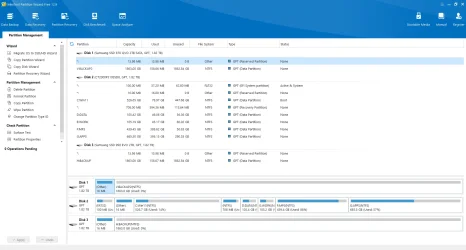- Local time
- 4:21 PM
- Posts
- 230
- OS
- Windows 11 Pro 24H2
I had a head space and had two drives in my secondary computer when I did my system installation. Naturally, the obvious happened, the boot files appear to be on the secondary drive, not where I want them.
The question is, what's the easiest way to correct this and get all the files on the boot drive? I don't want to reinstall everything since I've already got it all configured. The system is Win11 Pro 24H2, build 26100.3775
The question is, what's the easiest way to correct this and get all the files on the boot drive? I don't want to reinstall everything since I've already got it all configured. The system is Win11 Pro 24H2, build 26100.3775
My Computers
System One System Two
-
- OS
- Windows 11 Pro 24H2
- Computer type
- PC/Desktop
- Manufacturer/Model
- Home Brew
- CPU
- Intel Core i5 14500
- Motherboard
- Gigabyte B760M G P WIFI
- Memory
- 64GB DDR4
- Graphics Card(s)
- GeForce RTX 4060
- Sound Card
- Chipset Realtek
- Monitor(s) Displays
- LG 45" Ultragear, Acer 24" 1080p
- Screen Resolution
- 5120x1440, 1920x1080
- Hard Drives
- Crucial P310 2TB 2280 PCIe Gen4 3D NAND NVMe M.2 SSD
Silicon Power 2TB US75 Nvme PCIe Gen4 M.2 2280 SSD
Crucial BX500 2TB 3D NAND
- PSU
- Thermaltake Toughpower GF3 750W
- Case
- LIAN LI LANCOOL 216 E-ATX PC Case
- Cooling
- Lots of fans!
- Keyboard
- Microsoft Comfort Curve 2000
- Mouse
- Logitech G305
- Internet Speed
- Verizon FiOS 1GB
- Browser
- Firefox
- Antivirus
- Malware Bytes & Windows Security
-
- Operating System
- Windows 11 Pro 24H2
- Computer type
- PC/Desktop
- Manufacturer/Model
- Home Brew
- CPU
- Intel Core i5 14400
- Motherboard
- Gigabyte B760M DS3H AX
- Memory
- 32GB DDR5
- Graphics card(s)
- Intel 700 Embedded GPU
- Sound Card
- Realtek Embedded
- Monitor(s) Displays
- 17" HP 1080p
- Screen Resolution
- 1920x1080
- Hard Drives
- Crucial P310 2TB 2280 PCIe Gen4 eD NAND PCIe SSD
Samsung EVO 990 2TB NVMe Gen4 SSD
Samsung 2TB SATA SSD
- PSU
- Thermaltake Smart BM3 650W
- Case
- Okinos Micro ATX Case
- Cooling
- Fans
- Mouse
- Logitech G305
- Keyboard
- Microsoft Comfort Curve 2000
- Internet Speed
- Verizon FiOS 1GB
- Browser
- Firefox
- Antivirus
- Malware Bytes & Windows Security






